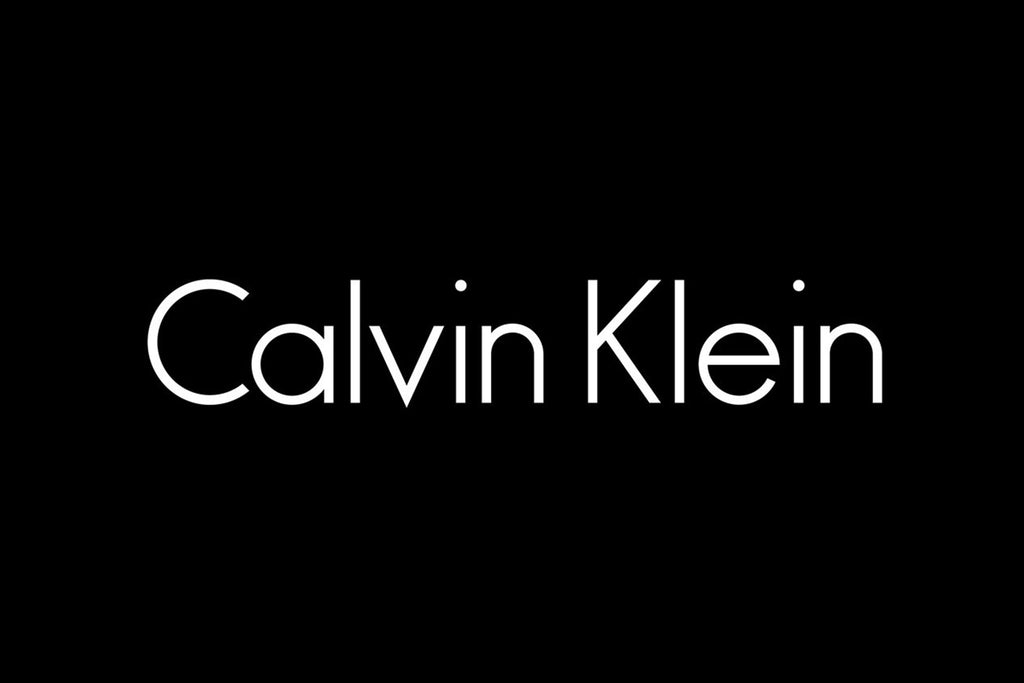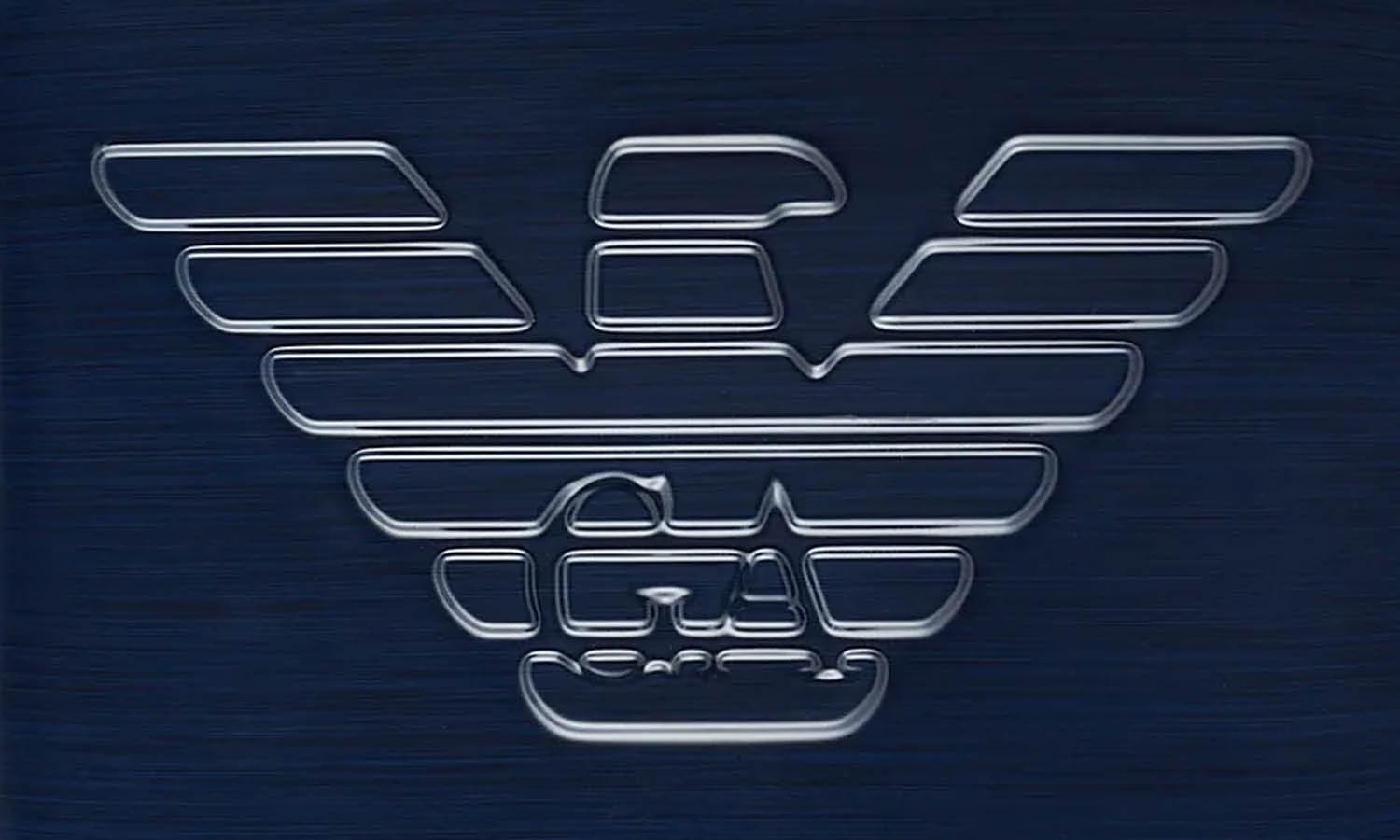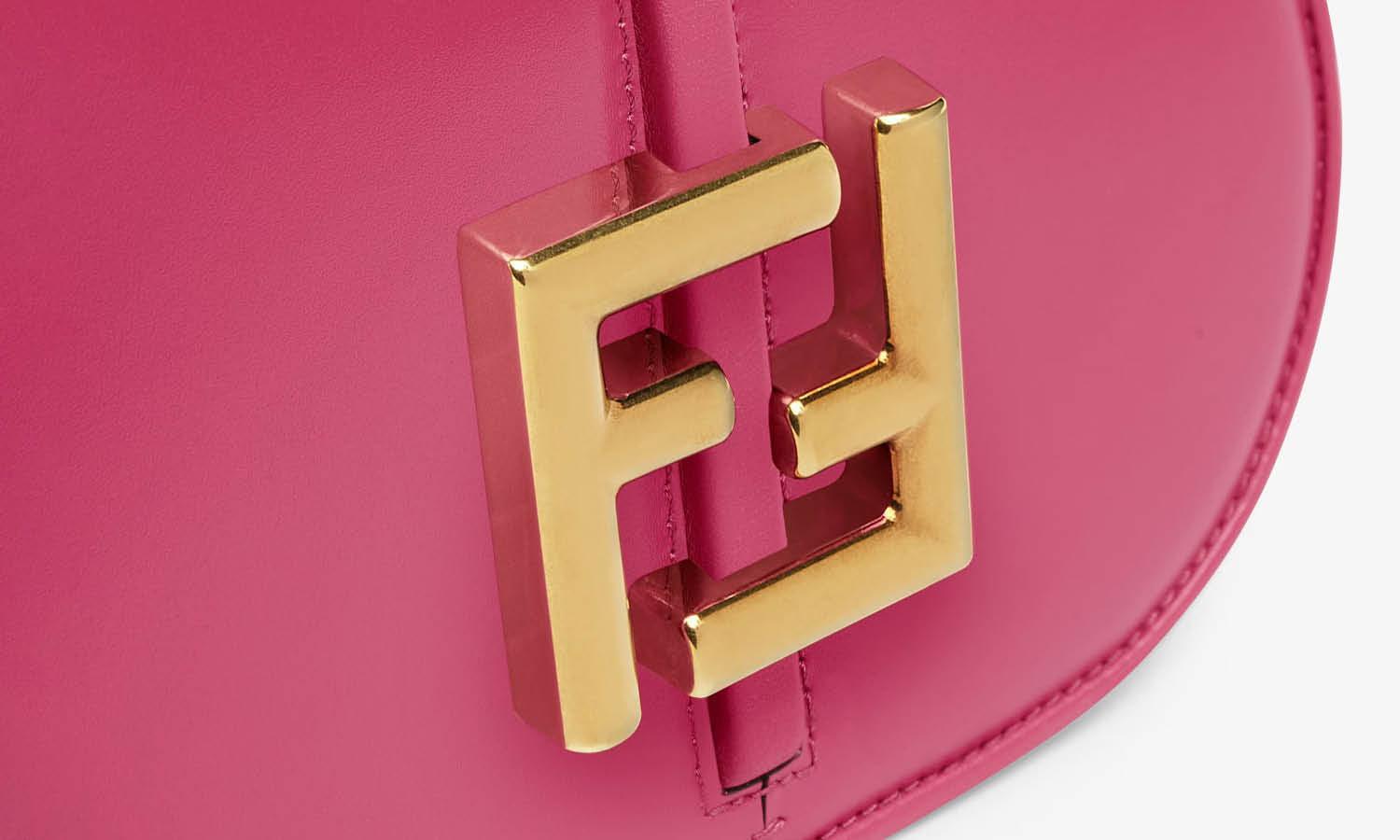Calvin Klein Logo Design: History & Evolution

Image Courtesy: Calvin Klein
When you think of timeless fashion, one name that often springs to mind is Calvin Klein. But have you ever taken a moment to consider the Calvin Klein logo design? This sleek and iconic symbol is more than just a representation of the brand; it's a reflection of its minimalist elegance and sophistication. The Calvin Klein logo design has undergone some remarkable changes throughout the years, adapting to the evolving fashion world without losing its classic charm.
In this article, we'll explore the rich history and evolution of the Calvin Klein logo design, taking a fun stroll through the past and diving into the design decisions that have kept it at the forefront of the fashion industry. Whether you're a fashion enthusiast, a logo design aficionado, or just curious about the legacy of a global brand, there's something here for you to enjoy. So buckle up, and let's start this exciting journey through the Calvin Klein logo design's remarkable transformation!
Calvin Klein Logo Design History
1968 - 1975
When it comes to iconic fashion branding, the early Calvin Klein logo design is a great example of simplicity done right. Introduced in 1968, this initial version of the logo boasted a delicate and light title-case wordmark, embracing an elegant yet unpretentious aesthetic that was truly ahead of its time.
The very first Calvin Klein logo design featured a monochrome palette, with black lettering set against a stark white background. This choice of color wasn't just a fashion statement; it represented the minimalist elegance that the brand would come to be known for. The black and white contrast gave the logo a fresh and extremely elegant look, creating an identity that stood out from the fashion crowd of the time.
What made this Calvin Klein logo design so intriguing was its simplicity. Though the lettering was executed in a traditional sans-serif, the specific fonts chosen were very close to Kontora Light and Hess Gothic Round NF. These fonts contributed to the logo's understated sophistication, allowing the brand's name to shine without unnecessary embellishment. It's worth noting that the careful selection of fonts played a significant role in reflecting the brand's identity, something that aspiring designers can draw inspiration from.
The choice to keep the Calvin Klein logo design simple and elegant during this period wasn't just a design decision; it was a strategic move that resonated with the brand's target audience. Fashion trends in the late '60s and early '70s were leaning towards a more understated and refined style, and Calvin Klein was right there, leading the way with a logo that embodied these ideals.
This original Calvin Klein logo design, while different from the more familiar versions we recognize today, played a vital role in establishing the brand's presence in the fashion industry. By aligning its visual identity with the understated elegance and simplicity that were key to the era's fashion trends, Calvin Klein set the stage for a legacy that continues to resonate.
As we delve deeper into the brand's visual evolution, this early period of the Calvin Klein logo design offers valuable lessons for designers and marketers alike. From its perfect alignment with fashion trends to its innovative use of fonts and colors, the logo's minimalism stood as a testament to the brand's forward-thinking approach. In a world where logos are constantly changing and adapting, the Calvin Klein logo design from 1968 to 1975 remains an iconic example of timeless elegance, proving that sometimes less truly is more. It's a fascinating beginning to the journey of a logo that has become synonymous with sophisticated fashion.

Image Courtesy: Calvin Klein
1975 - 1992
The 1975 to 1992 era marked a defining moment in the history of the Calvin Klein logo design. Building on the legacy of the first design, Calvin Klein sought to infuse more energy and boldness into the brand. The result was a redesign that turned the thin lines of the letters thicker, creating a more robust and resolute look that resonated with the fashion world's changing landscape.
This Calvin Klein logo design transition was more than just a visual shift; it was a statement about the brand's evolution and growing confidence. By switching the typeface to a more solid and intense one, the logo began to reflect a bolder and more audacious spirit. Fonts similar to ITC Avant Garde Gothic Pro Book and OL Round Gothic Bold were used to achieve this effect, underscoring the brand's emphasis on progressive design and innovation.
What made this redesign so compelling was how it managed to balance tradition and modernity. The new Calvin Klein logo design retained the minimalist elegance that had become the brand's hallmark, while simultaneously embracing a more vigorous and assertive appearance. This bridging of the old and new was a subtle nod to the brand's history, and a clear signal of its ambition to lead the fashion world into a new era.
During this period, the fashion industry itself was experiencing a dramatic transformation. Styles were becoming bolder, lines were getting sharper, and there was a growing emphasis on individuality and self-expression. The new Calvin Klein logo design perfectly encapsulated these trends, placing the brand at the forefront of contemporary fashion.
But the importance of this redesign goes beyond mere aesthetics. The change in the Calvin Klein logo design was a strategic move, allowing the brand to reach new audiences and broaden its appeal. This bolder logo didn't just mirror the fashion industry's evolution; it also connected with a younger, more adventurous generation of consumers, eager to explore new trends and challenge the status quo.
In retrospect, the Calvin Klein logo design from 1975 to 1992 was a masterstroke in branding and design. By aligning the logo with the zeitgeist of the time and tapping into emerging fashion sensibilities, Calvin Klein solidified its place as a leader in the industry. This period stands as a vivid example of how thoughtful design and understanding of cultural shifts can create a timeless and adaptable logo.
Today, designers and brand enthusiasts can look back at this chapter in the Calvin Klein logo design history and find inspiration in its ability to adapt, innovate, and lead. It's a story of transformation that mirrors not just the brand's journey but the broader evolution of fashion and culture during a pivotal time in history. The lesson from this era of the Calvin Klein logo design? Never be afraid to be bold, especially when it aligns with the world's heartbeat.

Image Courtesy: Calvin Klein
1992 - 2017
The Calvin Klein logo design story took another fascinating turn in 1992, with a design that cleverly bridged the brand's past and future. This chapter in the brand's visual history saw a change in typeface that could be described as something in the middle between the two previous versions, but still maintaining the same style and shapes that had come to symbolize Calvin Klein's unique blend of sophistication and innovation.
During this 1992 - 2017 period, one of the most significant additions to the Calvin Klein logo design was the active use of the "CK" monogram in lowercase as a signifier. This elegant and simple monogram became synonymous with the brand, encapsulating its essence in just two letters. The "CK" monogram found its way into various marketing materials, packaging, and products, further solidifying Calvin Klein's presence in the fashion world.
The new typeface of the Calvin Klein wordmark bore a striking resemblance to Bambino Light font, echoing a sense of continuity while introducing a refreshing twist to the design. The new font subtly modernized the logo, giving it a more contemporary feel without straying too far from the brand's visual heritage.
One of the remarkable aspects of the Calvin Klein logo design during this era was its versatility. The combination of the refined wordmark and the iconic "CK" monogram allowed the brand to communicate its identity across different platforms and mediums seamlessly. This ability to adapt while maintaining brand consistency became a vital asset in an age where digital media was beginning to reshape how brands interacted with their audiences.
This period also saw Calvin Klein expanding into new markets and product lines. The logo's adaptable design played a key role in this growth, facilitating the brand's transition into various fashion segments without losing its core identity.
Reflecting on this era of the Calvin Klein logo design, it's clear that the brand's approach was both strategic and intuitive. By embracing a design that paid homage to its past while looking to the future, Calvin Klein was able to stay relevant in a fast-changing industry. The subtle changes in typeface and the addition of the "CK" monogram demonstrated a deep understanding of design's role in conveying a brand's personality, values, and aspirations.
The Calvin Klein logo design from 1992 to 2017 stands as a testament to the power of thoughtful and responsive design. It's a chapter that offers valuable insights into how a logo can evolve, adapt, and thrive over time, reflecting not just the brand's journey but also the broader trends and shifts within the fashion industry. It's a period of the Calvin Klein logo design that continues to inspire, reminding us that great design is not just about aesthetics; it's about connection, continuity, and the courage to embrace change.

Image Courtesy: Calvin Klein
2017 - 2020
The Calvin Klein logo design took yet another intriguing twist in 2017, as the brand revisited its visual roots while infusing fresh energy into its identity. The redesign brought about a significant change: the logo's letters were now capitalized, reflecting a stronger and more assertive stance.
This new iteration of the Calvin Klein logo design harkened back to the 1980s, utilizing the typeface ITC Avant Garde Gothic Pro Book that the brand had used for its logotype in that era. This choice created a connection to the brand's heritage, a nostalgic nod to a period of bold creativity and innovation.
But the redesign wasn't merely a look back in time. The letters in the 2017 Calvin Klein logo design were placed pretty close to each other, giving them a slightly condensed appearance. This seemingly small adjustment had a significant impact, making the logo look solid and robust, reflecting a renewed sense of confidence and ambition.
What's intriguing about this Calvin Klein logo design is how it managed to capture the essence of the brand while adapting to the evolving landscape of fashion and design. The capitalized letters projected an image of strength and maturity, resonating with a growing global audience that valued authenticity and bold self-expression.
Moreover, the slight condensation of the letters brought a modern touch to the logo, ensuring it didn't feel outdated or out of sync with contemporary design trends. This balance between past and present allowed the Calvin Klein logo design to retain its iconic status while aligning with the tastes and sensibilities of a new generation.
The years between 2017 and 2020 were marked by rapid changes in technology, media, and consumer behavior. Brands were challenged to find new ways to engage with their audiences and stand out in a crowded marketplace. The Calvin Klein logo design from this period serves as an inspiring example of how a brand can navigate these challenges with creativity and finesse.
By revisiting its past and reinterpreting it through a modern lens, Calvin Klein reinforced its identity while staying relevant and fresh. It's a lesson in how design can be both a reflection of heritage and a catalyst for growth, embodying the core values of a brand while adapting to the demands of an ever-changing world.
In the grand tapestry of the Calvin Klein logo design history, the 2017 - 2020 era stands out as a powerful affirmation of the brand's ability to evolve without losing sight of its essence. It's a period that continues to inspire designers and brand enthusiasts alike, offering insights into how creativity, vision, and a deep understanding of one's identity can shape a logo that resonates across generations and cultures. It's yet another chapter in the Calvin Klein logo design journey that underscores the timeless appeal of thoughtfully crafted design.

Image Courtesy: Calvin Klein
2020 - Present
The Calvin Klein logo design story embarked on its most recent chapter in 2020, where subtlety became the watchword. Building on the previous redesign, the 2020 logo kept the same essential style but introduced a nuanced change that, though seemingly minor, adds depth to the brand's visual identity.
The 2020 logotype utilizes the same font as its direct predecessor, ITC Avant Garde Gothic Pro Book. However, the innovation lies in the blend of small letters with capital ones. This choice creates a visual rhythm that speaks to the brand's enduring commitment to elegance and modernity.
One of the remarkable things about this era of the Calvin Klein logo design is its ability to innovate within continuity. By maintaining the same font but playing with the capitalization, the logo retains its connection to the previous versions while subtly evolving to reflect the ever-changing landscape of contemporary fashion.
This understated shift in the Calvin Klein logo design is emblematic of the brand's mastery of minimalism. It showcases a confidence in the power of simplicity, a belief that small changes can have a profound impact. The blend of small and capital letters adds texture and dynamism to the logo, making it visually engaging without being overly complex.
In a world where brands often seek to make bold statements through drastic redesigns, the Calvin Klein logo design stands out for its nuanced approach. It's a testament to the brand's understanding of its own identity and its ability to articulate that identity through subtle and thoughtful design choices.
This era of the Calvin Klein logo design also underscores the importance of continuity in building and maintaining brand recognition. By opting for a gentle evolution rather than a complete overhaul, Calvin Klein ensures that its logo remains instantly recognizable to its loyal customer base while still resonating with new audiences.
Looking at the broader context of the 2020s, a time marked by an increasing emphasis on authenticity and connection, the Calvin Klein logo design seems perfectly attuned to the zeitgeist. It's a design that speaks to the brand's heritage while embracing the future, a blend of tradition and innovation that feels both timeless and timely.
The Calvin Klein logo design from 2020 to the present serves as a reminder that great design doesn't always require radical changes. Sometimes, the most powerful statements are made through subtle refinements, careful adjustments that honor the past while looking forward to the future.
For designers and brand enthusiasts, this chapter in the Calvin Klein logo design history offers valuable insights into the art of visual storytelling. It's a story about the importance of knowing oneself, of understanding the essence of a brand, and of having the courage to innovate within that essence. It's a lesson in the power of subtlety and the endless possibilities that lie in the interplay of small and capital letters. Above all, it's a celebration of design as a journey, a continual process of exploration, reflection, and growth, perfectly encapsulated in the ever-evolving Calvin Klein logo design.

Image Courtesy: Calvin Klein
Analysis: Calvin Klein Logo Design Evolution
The journey of the Calvin Klein logo design is a masterclass in branding, encapsulating over five decades of fashion, innovation, and cultural shifts. Reflecting both timeless elegance and a willingness to adapt, the Calvin Klein logo's story provides valuable insights for designers and brand enthusiasts alike. Let's explore five key aspects of this evolution, taking a closer look at how the Calvin Klein logo design has remained iconic while constantly reinventing itself.
Continuity and Innovation
Throughout its history, the Calvin Klein logo design has maintained a delicate balance between continuity and innovation. The evolution from delicate and light wordmarks to bold and assertive typefaces showcases the brand's ability to embrace change while staying true to its core identity. This thread of continuity creates a visual narrative that resonates across generations.
Simplicity and Elegance
The Calvin Klein logo design is a study in minimalism, consistently opting for clean lines, simple typography, and monochrome palettes. This commitment to simplicity and elegance has allowed the logo to stand out in a cluttered marketplace, reflecting a brand that values understatement and sophistication.
Responsiveness to Cultural Trends
Calvin Klein has masterfully aligned its logo design with the broader cultural trends of each era. From the fresh and elegant design of the 1960s to the nuanced blending of small and capital letters in 2020, the logo has adapted to the changing tastes and sensibilities of its audience, remaining relevant and engaging.
Versatility and Adaptability
One of the standout features of the Calvin Klein logo design is its ability to translate across various platforms and mediums. Whether displayed on billboards or stitched onto clothing labels, the logo's versatile design has enabled it to become an instantly recognizable symbol of the brand, adapting to different contexts without losing its essence.
Nostalgia and Modernity
In its recent iterations, the Calvin Klein logo design has skillfully combined nostalgia with modernity. By revisiting past typefaces and introducing subtle innovations, the logo creates a bridge between the brand's heritage and its future, embodying a brand that honors its roots while continuously looking forward.
The Calvin Klein logo design evolution is more than just a timeline of aesthetic changes; it's a rich tapestry of branding wisdom, design creativity, and cultural awareness. Its enduring appeal lies in its ability to capture the essence of Calvin Klein while staying attuned to the evolving landscape of design and fashion. It's a story that inspires, offering a roadmap for how to craft a logo that is both timeless and timely, both classic and contemporary. It's a testament to the profound impact that thoughtful design can have, perfectly encapsulated in the ever-evolving Calvin Klein logo design.

Image Source: https://www.calvinklein.us/en | Image Courtesy: Calvin Klein
The Philosophy & Meaning Behind Calvin Klein Logo Design
The Calvin Klein logo design is more than just a visual identifier for the brand; it's an embodiment of a philosophy that has shaped the company's identity for decades. Simple yet profound, the logo captures the essence of Calvin Klein in a way that resonates with its audience. Let's uncover the philosophy and meaning behind the Calvin Klein logo design by exploring five central themes that make this logo not only aesthetically appealing but deeply significant.
Minimalism as a Statement
The Calvin Klein logo design champions minimalism. With its uncluttered design, it emphasizes purity and clarity, reflecting the brand's dedication to simplicity in both fashion and visual communication. This minimalist approach is a statement in itself, challenging the noise and complexity of modern life and offering a breath of fresh air.
Elegance through Typography
Throughout its history, the Calvin Klein logo design has employed elegant typography, from the delicate Kontora Light to the assertive ITC Avant Garde Gothic Pro Book. This careful choice of typefaces conveys a sense of sophistication and grace, mirroring the elegance of the brand's clothing lines and overall aesthetic.
Adaptation and Evolution
The various iterations of the Calvin Klein logo design reflect a philosophy of adaptation and evolution. The logo's changes over time are not arbitrary; they mirror the brand's growth, its response to cultural shifts, and its continual quest for innovation. This adaptability imbues the logo with a sense of life and dynamism, making it a living part of the brand's journey.
Heritage and Modernity
The Calvin Klein logo design skillfully blends heritage with modernity. By revisiting past designs and intertwining them with contemporary elements, the logo builds a bridge between the brand's rich history and its forward-looking vision. It's a celebration of roots and wings, a symbol of a brand that honors its past while embracing the future.
Universality and Timelessness
Perhaps one of the most striking aspects of the Calvin Klein logo design is its universal appeal. Its simple design transcends cultural and temporal boundaries, resonating with diverse audiences across the globe. This universality imbues the logo with a sense of timelessness, making it an enduring symbol of the brand's values and aspirations.
The philosophy and meaning behind the Calvin Klein logo design go far beyond visual aesthetics. It's a multi-dimensional symbol that encapsulates the brand's core values, its vision, and its connection with its audience. From minimalism to universality, the logo's design elements weave together to tell a story that is as inspiring as it is visually captivating. Whether a seasoned designer or a casual observer, one can't help but be drawn into the profound simplicity and thoughtful complexity of the Calvin Klein logo design. It's a masterful blend of art and philosophy, a visual manifesto that speaks to the heart and mind, reflecting the soul of a brand that continues to inspire and innovate.

Image Source: https://www.calvinklein.us/en | Image Courtesy: Calvin Klein
What Can We Learn from Calvin Klein Logo Design
The Calvin Klein logo design is more than just a brand emblem; it's a textbook example of design excellence and strategic thinking. The logo's evolution tells a story that goes beyond aesthetics, encapsulating lessons that are valuable not only for designers but for anyone interested in branding, marketing, or visual communication. Let's explore five key lessons we can glean from the Calvin Klein logo design, each offering insights that resonate far beyond the fashion world.
Embrace Simplicity
The Calvin Klein logo design's minimalist approach demonstrates the power of simplicity. In a world cluttered with visual noise, the logo stands out for its clean and unadorned elegance. The lesson here is that simplicity can be more impactful than complexity, allowing the essence of the brand to shine through without distraction.
Stay True to Your Brand Identity
Across its various iterations, the Calvin Klein logo design has maintained a consistent identity. While adapting to cultural shifts and design trends, it has remained true to its core values of sophistication and modernity. This adherence to brand identity helps build trust and recognition, a lesson in the importance of knowing who you are as a brand and expressing that authentically.
Adapt While Maintaining Continuity
The Calvin Klein logo design evolution showcases a masterful balance of adaptation and continuity. Each redesign reflects the times without losing the essence of the brand. This teaches us the value of staying relevant while maintaining a recognizable thread that connects the past with the present.
Use Typography to Convey Emotion
Typography in the Calvin Klein logo design is more than a stylistic choice; it's an emotional communicator. The shift from delicate typefaces to bolder ones reflects the brand's evolution and speaks to its audience on a subconscious level. This offers a lesson in how typography can be used as a powerful tool to convey emotion and personality.
Create a Timeless Design
The Calvin Klein logo design's ability to resonate across different eras is a testament to timeless design. By focusing on fundamental principles rather than fleeting trends, the logo endures. This teaches us the value of creating designs that are not just of the moment but that have the potential to become timeless classics.
The Calvin Klein logo design offers a rich well of insights and lessons, each one a testament to thoughtful design and strategic branding. From embracing simplicity to crafting timeless visuals, these lessons are applicable across various fields and industries. Whether you're a seasoned designer or simply someone interested in the world of branding, the Calvin Klein logo design offers a window into the art and science of creating visuals that connect, resonate, and endure. It's a story of how design can transcend aesthetics to become a strategic asset, a living part of a brand's identity, and a source of inspiration for all who seek to understand the nuanced relationship between form and meaning.
Conclusion
The Calvin Klein logo design is more than a mere symbol; it's a narrative of innovation, elegance, and timeless appeal. Through its various transformations, it has maintained an artistic integrity that speaks to both its history and its future. As we've explored, the lessons drawn from the Calvin Klein logo design are invaluable for designers, marketers, and brand enthusiasts alike. Reflecting on this iconic emblem, we are reminded of the profound impact that thoughtful design can have, perfectly encapsulated in the ever-evolving yet consistently captivating Calvin Klein logo design.
Let Us Know What You Think!
These fantastic logo design articles are written and curated by Kreafolk's team. We hope you enjoy our information and remember to leave us a comment below. Cheers!
















Leave a Comment